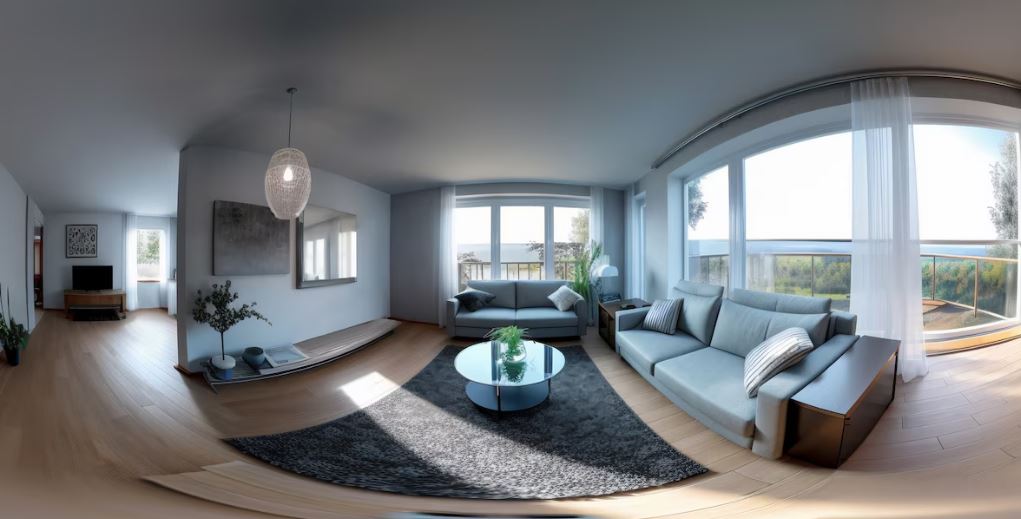Platforms for AI room makeovers have subtly evolved from a novelty to a need for anyone experiencing creative blockage or spatial overload at home. An incredibly efficient substitute for employing a human designer is being provided by RoomGPT and RoomAI, which use user-friendly design engines driven by deep learning models. A smartphone photo of your space and a sense of style are all you need. Users get a full makeover in a matter of seconds, with their choices, space, and even lighting reflected in a photo-realistic visual.
These platforms are based on sophisticated computer vision and design databases that simulate an experienced interior decorator’s intuition. The AI creates concepts that resemble inspiration boards from upscale design magazines rather than being machine output by analyzing spatial dimensions, shadows, object recognition, and contextual cues. In addition to being remarkably similar to rooms created by humans, the outcomes frequently have a refreshingly unique feel.
AI Room Makeover – At-a-Glance Information
| Feature | Details |
|---|---|
| Popular Platforms | RoomGPT, RoomAI, AI Room Planner, REimagineHome, Spacely |
| What You Do | Upload a photo of your room and choose a style |
| What AI Does | Generates photorealistic redesign ideas instantly |
| Core Technology Used | Generative AI, neural networks, 3D rendering, style transfer algorithms |
| User Base | Over 2 million globally, including homeowners, designers, and realtors |
| Common Output Styles | Zen, Scandinavian, Modern, Japanese, Bohemian, Industrial |
| Use Cases | Virtual staging, home refresh, inspiration before renovation |
| Pricing Model | Mostly freemium—free access, paid for higher-res images or downloads |
| Notable Mentions | Featured in Elle Decor, Apartment Therapy, Reddit, YouTube reviews |
For the past ten years, interior design has continued to be a service-oriented field that is costly, time-consuming, and sometimes frightening to people who are not familiar with it. People started looking for ways to rediscover their homes and reevaluate how their rooms made them feel during the pandemic. During that time, artificial intelligence (AI) tools became a particularly novel solution. What began as a passing interest became widely used. Millions of people have uploaded pictures to websites like Spacely and REimagineHome today, and they have seen their worn-out bedrooms turn into cozy, minimalist havens or lively industrial lofts.
The broad appeal of these tools is what makes them so versatile. They offer images that help homeowners with small-scale remodeling plans make decisions about layouts and purchases. They provide aspirational options for renters without requiring them to do any work. These tools are becoming indispensable for real estate agents—virtual staging now takes minutes rather than days. Additionally, influencers can create highly clickable posts that blend functionality and visual storytelling by using AI-generated before-and-after content.
Users can now imagine dozens of layouts, color schemes, and furniture configurations without moving a single item thanks to AI collaboration rather than merely relying on hunches or generic Pinterest boards. For many people, especially those who are overwhelmed by clutter or stuck in indecision, that degree of immediate feedback has significantly increased their design confidence.
You can select from dozens of styles on websites like RoomGPT, ranging from the striking contrast of boho maximalism to the serene tranquility of Japanese interior design. After you select your favorite style, the AI engine transforms your space into a gorgeous new one. When combined with photorealistic rendering, the transformation is almost always quick—sometimes startlingly quick—and this speed is what makes the experience especially useful. People feel what their room could become, not just see it.
The emotional impact is echoed in user reviews. Content producers, software engineers, and startup founders have expressed sincere gratitude for the ways in which these tools have enabled them to rethink their workspaces. It had been five years since some had moved their rooms. There were too many options for others to handle. The app ultimately “got them over the fear of making a wrong decision,” according to one user. Such a change is emotionally significant in addition to being empowering.
Millions of people adopted remote work during the pandemic, turning kitchens into communal Zoom stages and bedrooms into offices. The way people value their spaces was drastically altered during that time. They are now reclaiming those spaces with clarity and confidence, rather than stress or debt, thanks to AI-powered room design. AI has democratized beauty by simplifying the interior design process and freeing up human talent for other creative pursuits. This has been surprisingly accessible and affordable.
Interior design used to be considered a luxury. These days, it seems accessible to almost everyone thanks to these resources. Even the free versions offer designs that are vivid enough to guide a complete makeover with just your phone and a trip to IKEA, even though the premium versions offer downloadable blueprints or shopping links.
These tools are becoming increasingly intelligent through ongoing machine learning and strategic partnerships. The AI improves its performance every day by examining which layouts users save, which styles are most frequently downloaded, and which colors work best in various lighting conditions. It is anticipated that features like automated furniture sourcing, smart room flow optimization, and augmented reality walkthroughs will become commonplace in the upcoming months.
This development is similar to how Canva made graphic design accessible to non-designers or how Grammarly changed writing. These room makeover platforms assist homeowners in expressing beauty spatially, much like AI writing assistants assist professionals in clearly expressing their thoughts. They provide incredibly clear feedback that expedites decision-making, translate hazy preferences into concrete images, and purposefully guide your vision.
These tools will likely be incorporated into hardware stores, retail showrooms, and online furniture stores in the upcoming years. Soon, a consumer may enter a store, use a smartphone app to scan their room, and leave with goods that AI has chosen for them based on their individual style preferences and physical limitations. That future seems near—possibly unavoidable.



